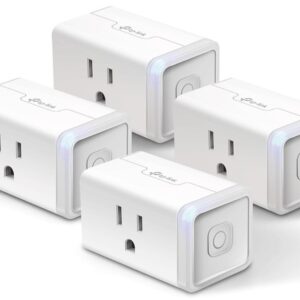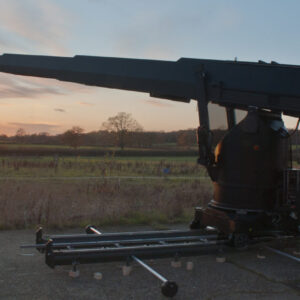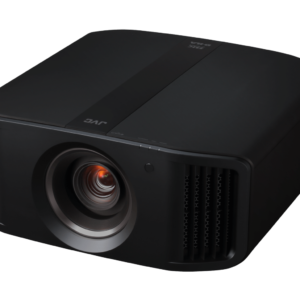By Robert Heron
robert@heronfidelilty.com
April 20, 2024
A bit of fine-tuning can go a long way toward improving the accuracy and performance of any display. Professional video content authors adhere to industry standards related to color and luminance that help ensure the distributed material has a chance of faithful and consistent reproduction across multiple display types. Display manufacturers are also keenly aware of these standards and (hopefully) strive to craft products that achieve accurate reproduction or, at least, provide the necessary picture control options to achieve optimal results.
Ambiance and Adaptation
Ambient lighting conditions influence our perception of color and detail, including when we gaze upon a display’s illuminated pixels. Therefore, an optimal display configuration for a brightly lit environment will differ from one that looks best in a darkened, light-controlled room.
Every display, including those found in mobile devices, computer monitors, and televisions, offers some user-adjustable menu options related to picture quality. The easiest of these controls to experiment with is a display’s picture presets. Most display devices provide several picture presets that can be enabled to optimize the display for different environmental lighting conditions – quickly and easily.
A practical example of picture preset use is the modern television. In a darkroom viewing environment, factory-calibrated presets with names like Cinema, Filmmaker, or Movie will come closest to providing ideal, near-reference image reproduction. However, when viewed in a bright, sunlit room, these presets likely produce a dim and washed-out picture. To compensate for a well-lit room viewing scenario, a picture preset that boosts color saturation and luminance and uses a cooler (bluer) white balance would make the image appear more accurate and appealing.

Recent Android and Apple mobile devices offer factory-calibrated picture presets that are remarkably accurate when viewed in light-controlled environments. These mobile devices also provide display modes that utilize an integrated light sensor to make automatic adjustments that help maintain a consistent presentation of color and detail under varying ambient lighting conditions. Televisions that feature Dolby Vision IQ technology also analyze ambient lighting conditions and can apply corrective, compensating adjustments in real time.
Picture Settings
Additional picture controls are available in the settings menu for most computer monitors and televisions. The contrast setting affects peak-bright luminance and detail. Increasing contrast will produce a brighter picture, but increasing it too much will clip the brightest details, making them appear indistinct. Sometimes, setting the picture contrast too high will also discolor peak-bright details. However, for televisions that support HDR video playback, the contrast picture control (and other picture settings) often defaults to maximum when displaying HDR video content and should be left as such for the most accurate image quality.

The brightness picture setting has historically described a black-level adjustment that fine-tunes the luminance and visibility of the displayed image’s darkest details. Setting brightness too low results in the crushing of shadow detail, and setting it too high will brighten the darkest grays (and black), reducing picture contrast. Thankfully, more display manufacturers are providing a properly labeled black level control and regulating the brightness setting to control the overall luminance of the image without affecting other picture characteristics. Picture controls with names like backlight, OLED light, or OLED pixel brightness are also proper picture luminance controls that do not affect a display’s black level setup and can be used to adjust the TV’s output for eye-comfortable levels in a given viewing environment.
Many display devices feature a sharpness setting better described as artificial edge enhancement. Overly raising the sharpness setting will add an increasingly evident bright outline to dark objects and a dark outline to bright objects – e.g., ringing artifacts. Sharpness is indiscriminate in that it will also apply this effect to any noise or compression artifacts in the image, making them increasingly and undesirably apparent. A sharpness setting of zero or off provides the most accurate depiction of the video source material.
If DIY isn’t your thing, professional video calibrators utilize specialized hardware and software to evaluate picture quality and adjust appropriately. Some displays offer programmable correction features that video calibrators can access to refine the output to a particular reference standard. Precisely calibrated consumer televisions are regularly used to author content and provide a critical client view in video production facilities.
Motion
Motion resolution in televisions and monitors refers to the clarity of moving objects within the scene. The more frames per second used in the capture and recording process, the less individual frames will exhibit blurring of fast-moving objects. Most movies, including films and live TV programs, are recorded initially at 24fps (frames per second). Broadcasters often use a faster recording capture rate of 60 fps for most sporting events. The video processors in many televisions can artificially enhance video clarity by interpolating and inserting virtual frames between actual video frames. However, applying interpolated frames to content originally captured at 24fps will alter the aesthetic appearance of the presentation – losing its “film” look.

The latest generation of video processors used in televisions features machine-trained neural networks that use advanced object recognition, motion compensation/motion estimation (MC/ME), and image scaling to enhance picture quality. While this technology is increasingly good at improving the look of low-bitrate or low-resolution video material, there is a concern that it may alter the artistic attributes of some content in ways that are not faithful to the author’s original work.
Many TVs feature motion controls related to blur and judder reduction. In most cases, the blur reduction setting only affects content captured and presented at 30fps or greater, while the judder setting only targets 24fps video material. It is advisable to leave these settings disabled or keep the judder-related control as low as possible to preserve the film-like aesthetic while minimizing unsightly motion artifacts.
Location, location, location
In addition to the many picture-related controls available on modern display devices, it is essential to consider how the display’s location aligns with the primary viewing area. It’s best practice to position a display centered at eye level and perpendicular to the viewer – avoid the temptation of placing or mounting a TV too high. At least one display mount company specializing in retractable options can help tame unavoidably high placement. Minimizing screen glare or harsh reflections is another critical display consideration. Some TVs feature effective anti-reflective screen surfaces that can improve the viewing experience when a window or other light source otherwise disrupts the presentation.

Listen up
Most TVs feature mediocre sound quality that cannot adequately represent the audio experience of movies and television programming. Many TVs and streaming devices support Bluetooth-compatible wireless earbuds and headphones that can assist those who are hard of hearing or desire increased listening privacy. A value-priced soundbar can also enhance the listening experience appreciably beyond what’s built-in, and some models offer effective surround sound capabilities with easy installation.
Robert is a technologist with over 20 years of experience testing and evaluating consumer electronics devices, primarily focusing on commercial and home theater equipment.
Robert's expertise as an audio-visual professional derives from testing and reviewing hundreds of related products, managing a successful AV test lab, and maintaining continuous education and certifications through organizations such as CEDIA, the Imaging Science Foundation (ISF), and THX.
More recently, Robert has specialized in analyzing audio and video display systems, offering comprehensive feedback, and implementing corrective measures per industry standards. He aims to deliver an experience that reflects the artists' intent and provides coworkers and the public with clear, insightful product information.










